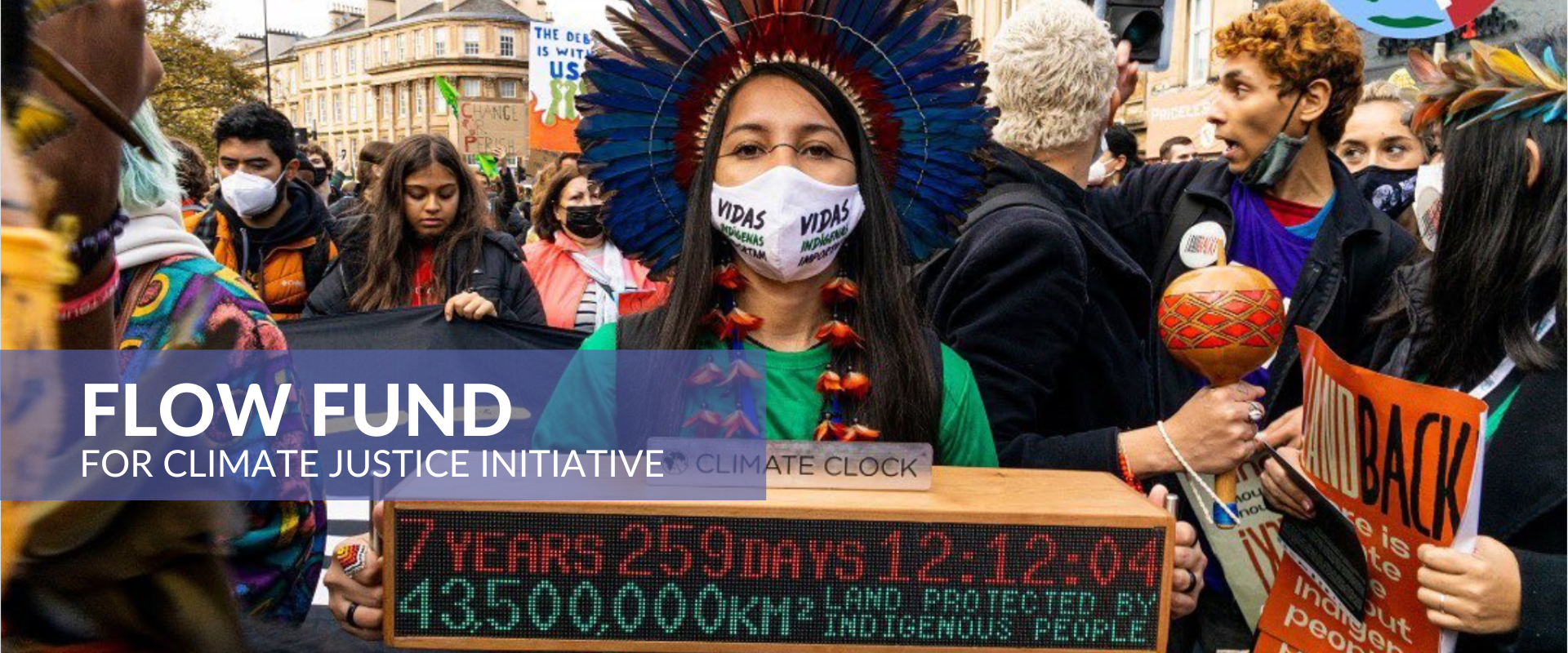
Since the Panta Rhea Foundation began, arts and culture have been central to its mission of catalyzing a just and sustainable world through food sovereignty, people-powered systems change, and grassroots resilience around the globe. In addition, cultivating deep relationships with our partners has helped evolve our thinking around our role as a funder. Wanting to deepen our connection between creativity and movement building, we began a learning process in 2021 to determine what more we could do to advance such efforts.
ABOUT THE FLOW FUND INITIATIVE
The Panta Rhea Flow Fund is a two-year initiative to support creative practices while shifting traditional funder-led grant decision-making process to community-based activists. Launched in spring 2022, the goals of the Flow Fund are:
- To support U.S.-based social justice movement organizations using arts-based strategies to amplify and/or advance their climate justice advocacy.
- To engage in reciprocal learning while building deep relationships with climate justice and arts community members.
- To shift grantmaking decision-making power to those who are most closely connected to the arts and climate justice, rather than centering it with donors and funders.
The initial phase of the Flow Fund focuses on climate justice, the most intersectional issue of our generation.
FLOW FUNDERS
Panta Rhea and our community of grantee partners have long supported the arts as a powerful tool to help us imagine new ways of living and caring for each other and the Earth. Among movement organizations, arts-based strategies conceived of and/or lead by artists are often used to amplify and advance advocacy efforts but are often under-funded or not funded at all. This initiative seeks to address this lack of support with artists and advocates taking the lead.
Panta Rhea is thankful for its cohort of Flow Funders, made up of five individuals actively engaged in arts and climate justice in communities across the United States. Flow Funders bring a wealth of lived and professional experiences, including filmmaking, journalism, activism, artmaking, community organizing, healing practices, restorative justice, artistic curation, labor organizing, and stewarding reclaimed Indigenous land. Through the process of building community, each Flow Funder articulated their grantmaking strategies and recommended grants based on their insights and goals of the initiative. Each Flow Funder recommended up to $50,000 in grants.
We will maintain Flow Funders’ anonymity to ensure safe and free-flowing engagement during the next phase of the initiative.
Gerlie Collado, Panta Rhea’s grants and administration lead, is a cohort member and stewards the initiative on the Foundation’s behalf.

Photo: Raizes Collective members work on a mural at Haystack Farm in Sonoma, CA in 2021.
GRANTS
Flow Fund grantee partners are 501c3 nonprofit organizations, range in organization size and are located throughout the US. They include artists, labor unions, environmental advocates, and healing circles and spaces, all with missions and values that align with the Flow Fund goals and visions of the individual Flow Funders.
FOUNDING PARTNER
Kindle Project, the initiative’s founding partner and facilitator, is a women-founded, women of color-led, grassroots philanthropic organization working intersectionally to build bridges, flip power, and support community-driven philanthropy. Kindle Project has over 15 years of experience with various methods of participatory grantmaking, including Flow Funding. Kindle Project Flow Funding as a “participatory grantmaking approach that engages innovators, individuals, and organizations outside of typical philanthropic institutions with funds that they recommend as grants and gifts to communities and organizations of their choice. Flow Funding seeks to break open predictable patterns of philanthropic decision-making and allows for the democratization of funding decisions. This change in decision-making helps shift power and resources so that they reach unlikely places that are not visible from within a traditional funding model.”

